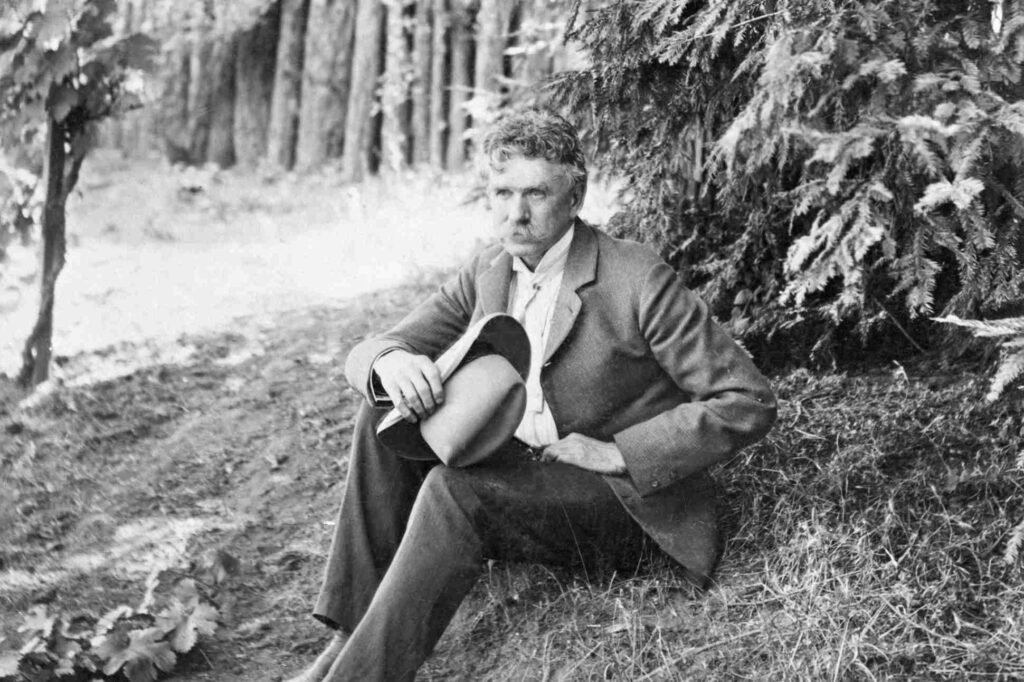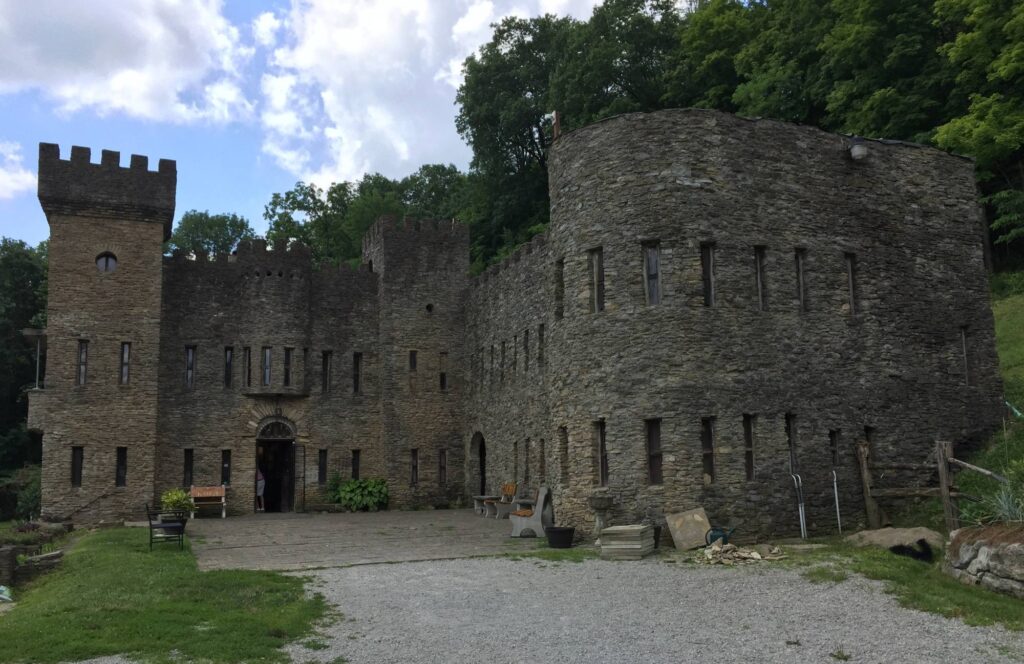When you think of truly great American writers, what names come to mind? Mark Twain? Edgar Allen Poe? What about Harper Lee or F. Scott Fitzgerald? Steinbeck? Bradbury? Capote? Hemingway? What about Stephen King or Toni Morrison or Alice Walker or Tennassee WIlliams or Arthur Miller or Raymond Chandler? Okay, I can hear you say, America’s been around for quite a few centuries and in that time it’s produced quite a few excellent writers.
Yet, there is one name that never quite makes those lists, even though he (according to most experts in the subject) really does deserve to be on them – Ambrose Bierce.
Bierce’s book The Devil’s Dictionary was named one of “The 100 Greatest Masterpieces of American Literature” by the American Revolution Bicentennial Administration. His short story “An Occurrence at Owl Creek Bridge” is one of the most anthologized stories in American Literature. He is often compared to Poe and Lovecraft, and writers like Ernest Hemmingway and Steven Crane have called him a big inspiration.
So, why is it that so many people today haven’t heard of him? (Or, can’t remember hearing of him, if that makes a difference?)
Our boy was born Ambrose Gwinnett Bierce on June 24, 1842 in Meigs County, Ohio, to Marcus Aurelius Bierce and his wife Laura, who decided to name all thirteen of their children names that began with the letter A. Both of his parents came from English (Puritan) Ancestry, which just might explain why Ambrose was always critical of genealogical matters and Puritan Family Values. His mother was also a decedant of Puritan Separatist William Bradford.
As a boy, he and his family moved to Indiana, where at the age of fifteen he moved out of the family home and took work as a Printer’s Devil, a young apprentice under a more experienced printer who learned how to mix ink and fetch type. The paper he worked for, the Northern Indiana, was a small abolitionist paper.
After a short stint with the Armed Forces, he relocated to California where he worked for several newspapers, before spending three years in England writing for Fun, which was a magazine at the time. Maybe he wrote for fun, too, you never know.
After returning to the states, he decided a change in career was in order, briefly becoming the manager of a mine, which quickly dried up and he went back to journalism again.
It wasn’t until the mid 1880s that he became involved with one of William Randolph Hearst’s paper, which led to making a name for himself as a journalist and writer up and down the West Coast.
That Railroad Bill
When the railroad boom began, both the Union Pacific and Western Pacific Railroad Companies received a fairly large loan from the United States Government to build the first intercontinental railroad. But, then in 1895, a bill was rushed through Congress that, if passed, would forgive this loan and make it so neither of the companies actually had to pay any of the money back. This did not go over very well with Hearst, so he dispatched Bierce to Washington D.C. to write about it (and hopefully put an end to it.)
Both of the Railroad giants knew that if the American people found out about this bill, they wouldn’t be all that happy, so everyone was trying to keep this whole affair quiet. Once he had arrived in Washington D.C., Bierce was confronted by Central Pacific’s executive Collis P. Huntington who tired to bribe him for his silence. Huntington told Bierce to name his price, whatever it would take to make him go away would be his. Bierce refused to answer Huntington’s question, at least at first. Instead, he answered the question via the newspapers, saying “My price is one hundred thirty million dollars. If, when you are ready to pay, I happen to be out of town, you may hand it over to my friend, the Treasurer of the United States.”
This went over about as well as you would expect – the Railroad Companies were less than thrilled, but were suddenly in the position they couldn’t really say or do much. And the American People were suddenly outraged, so I shouldn’t have to tell you that the bill never actually passed and both railroad companies had to repay the loans (and repay quickly).
Ambrose Bierce, the Author
As I mentioned above, Bierce did have a short history with the Armed Services. He was attending The Kentucky Military Institute when it burned to the ground, during the American Civil War, he enlisted in The Union’s army, participating in the Battle of Philippi in 1861. The following year he saw combat again in the Battle of Shiloh. He would continue to see combat until 1866 when he joined General Hazen on an expedition starting in Nebraska and crossing the great plains, eventually landing in California.
In his short stories such as “An Occurrence at Owl Creek Bridge“, “A Horseman in the Sky“, “One of the Missing“, and “Chickamauga“, he wrote about things he had personally witnessed, but with a satirical view, and a focus on things like the inscrutability of the universe and the absurdity of death.
Yet, while being both satirical and humorous, many of his short stories also dealt with more serious subjects, and a good argument can be made that he helped to pave the way for the modern Psychological Thriller genre.
Perhaps the best known work of Bierce’s (the only exception being Owl Creek Bridge) is The Devil’s Dictionary – a humorous, satirical list of words and their “definitions”. It took Bierce around thirty years to compile before first being published as The Cynic’s Word Book in 1906 then The Devil’s Dictionary in 1911.

The Ambrose Bierce Mystery
Throughout his life, Ambrose Bierce was about as eclectic as it gets. While he was known, first, as a journalist, then as a writer of stories (and works like The Devil’s Dictionary) … he didn’t seem to be the kind of man who liked keeping still. He was always, it seemed, off on some adventure.
In 1913, Bierce (along with a few of his war buddies he had managed to keep in touch with) left Washington D.C. to revisit some of the sites they saw while fighting in The Civil War. He reportedly toured parts of Louisiana and Texas before passing our southern border into Mexico. At the time, Mexico was in the midst of a revolution, so he joined Pancho Villa’s Army and escorted them all the way to Chihuahua City. It was from there that he wrote, on December 26, 1913, to a friend and fellow journalist Blanche Partington, “As to me, I leave here tomorrow for an unknown destination”.
Where he went, if he went anywhere at all, remains a mystery.
There are some who believe that Bierce reentered the United States and passed away somewhere in The Grand Canyon, either from illness or suicide. Others believe that he traveled some in Mexico after parting ways with Pancho Villa’s men and died while trying to witness the revolution. A third theory states that he was executed by Mexican authorities, lined up against a wall and shot.
While there are a few theories, his final time on earth remains a mystery.



